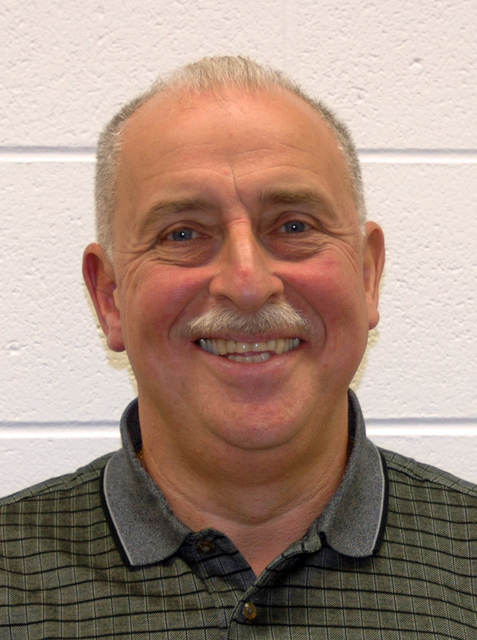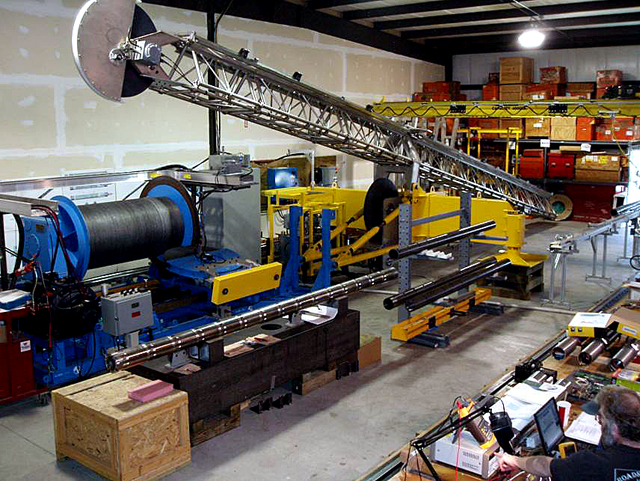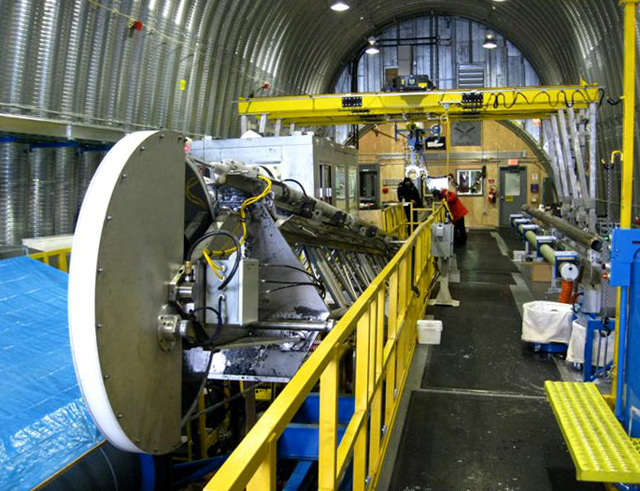Core of drillingUW-Madison group serves as one-stop shop for coring and cutting icePosted December 4, 2009
Scientists who need to drill, core, or chip away at the thick, hard ice sheets in Antarctica usually don’t have the necessary equipment sitting in a university basement somewhere. Need an ice core in an area where you may drill through bits of sand and rock? Better use a Koci Drill. Doing a little seismic work requiring numerous holes? A portable hotwater drill is probably the way to go. On the 12th floor of the Space Science and Engineering Center “We’ll design, build, test, operate — everything — so it’s one-stop shopping,” said Alexander Shturmakov, director of engineering and research for IDDO. The National Science Foundation (NSF) IDPO sets the science goals. After a project receives approval from the NSF, it’s then up to the people in Madison to select the right tool for the job — or design and build a completely new instrument. That’s what IDDO did when approval came for a deep ice core-drilling project in West Antarctica earlier this decade. Then called Ice Core Drilling Services before last year’s reorganization by the NSF, IDDO engineers created the Deep Ice Sheet Coring (DISC) Drill The electromechanical drill system is capable of cutting and retrieving cores of ice to depths of about 4,000 meters. Scientists analyze different properties in the cores — such as gases from the atmosphere trapped in bubbles — to study past climate. 
Photo Credit: Peter Rejcek
Alexander Shturmakov
Shturmakov takes obvious pride in the drilling system, which has bored down about 1,500 meters in the last two field seasons, including a nearly kilometer-deep stretch of brittle ice last year. “I’d say it’s revolutionary technology,” Shturmakov said. “The electronic brain of this drill is probably more complex than all drills put together.” Tony Wendricks, project coordinator for IDDO, said the group sent two of its engineers to foreign polar programs to study other ice-core drilling systems a year before the design work began around 2003. “They came back and took what they liked and expanded on it,” he said. It took nearly three years to design and build the DISC Drill, a system so large and complex that it required construction of an arched building to house it at the West Antarctic Ice Sheet (WAIS) Divide project Engineers first tested the drill in Greenland in 2006, made some adjustments to make the system more robust and reliable, before coring started in West Antarctica in 2007. “It’s a continuous process,” Shturmakov said of the engineering for the DISC Drill. “Every year when we’re back home, we’ll modify the drill. It’s not that it doesn’t work — we’ve been delivering excellent quality core since Core 1 — but there’s still room for improvement. “It’s like an automobile. You have your design down, but every year you make some changes, like changing a fender,” added Shturmakov, who formerly worked in the automotive industry before taking a turn at designing and managing ice core-drilling systems six years ago. Deep core drilling for the WAIS Divide project is scheduled for two more seasons — but that doesn’t mean the IDDO engineers are done in West Antarctica. They have two years to design and build what’s called a replicate coring drill. This system will send a drill down the WAIS Divide borehole to areas of interest to scientists, such as an area of ice with an unusually high concentration of particles, perhaps volcanic ash. The smaller drill will fit into the original 17-centimeter-wide hole and will bore into the ice at an angle up to 20 degrees. “It was something that was thought about ahead of time,” Wendricks explained. “Part of the original design was that the original hole would be larger than the replicate hole.” The DISC Drill, which Shturmakov unabashedly calls the most advanced of its kind, will likely be prepared for future work in the higher, colder elevations of East Antarctica after the WAIS Divide project is over. Currently, the drill is rated for temperatures of minus 40 degrees Celsius. “We’ll look at what we need to do to modify our existing [system] to accommodate minus 60,” Shturmakov said. “It’s a big project because we’ll have to go through our entire drill from A to Z.” And that’s just one drill for one project. IDDO has a catalog of coring systems, from a hand auger Then there’s bigger, heavier systems, like the rapid air movement (RAM) And then there’s the pile of projects on the drawing board, like the “horizontal ice core” drill for an upcoming project to collect ice at relatively shallow depths for quantity not quality. The engineers must figure out a way to design a system that can take about a 24-centimeter wide core. In comparison, the DISC drill collects a core about half that diameter. “The bigger the diameter, the harder it is to fracture it,” Wendricks noted. And looming not too far in the future is WISSARD, for Whillans Ice Stream Subglacial Access Research Drilling Biologists believe the waterworks underneath the ice may be home to unique organisms, while glaciologists want to understand more about how the water below may affect the flow of the ice sheet. The latter study is relevant to forecasts of future sea level rise. For IDDO, the project represents one of the supreme challenges in polar drilling — designing a system that won’t contaminate the pristine environment now shielded by the ice. “It’s a big challenge but it’s also a big opportunity,” Shturmakov said. In all, the Madison group has about 16 projects, according to Shturmakov, and more keep coming. Who would have thought ice core drilling was recession proof? “Our backlog is for many, many years,” he said. “Our group is growing because we have so many new projects.” NSF-funded research: Charles Bentley, University of Wisconsin-Madison, Award No. 0841135
|



For USAP Participants |
For The Public |
For Researchers and EducatorsContact UsU.S. National Science FoundationOffice of Polar Programs Geosciences Directorate 2415 Eisenhower Avenue, Suite W7100 Alexandria, VA 22314 Sign up for the NSF Office of Polar Programs newsletter and events. Feedback Form |



